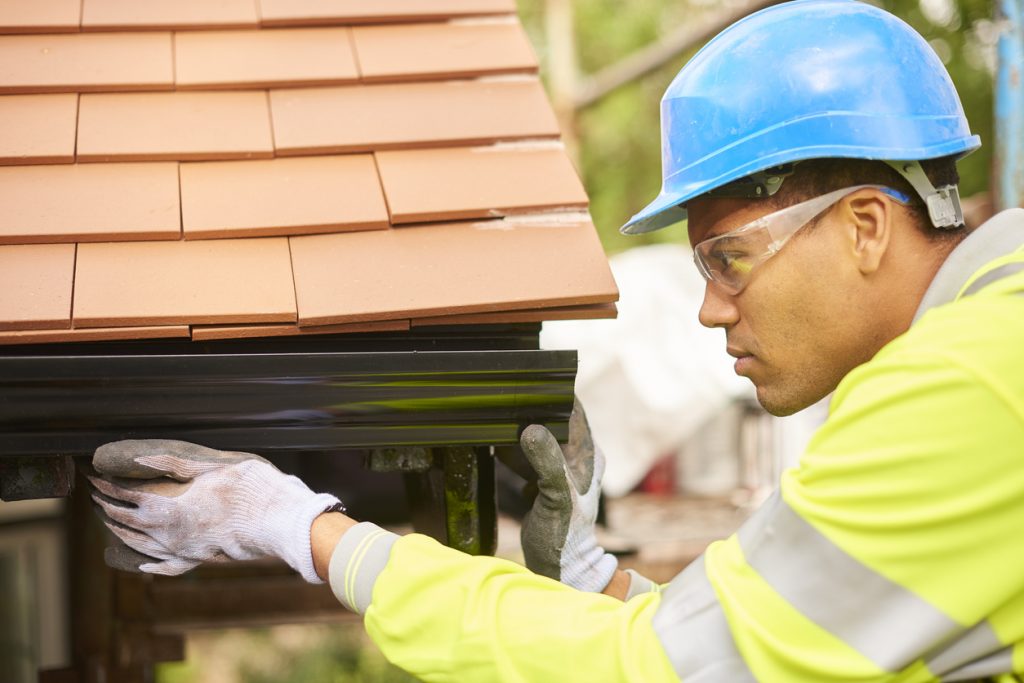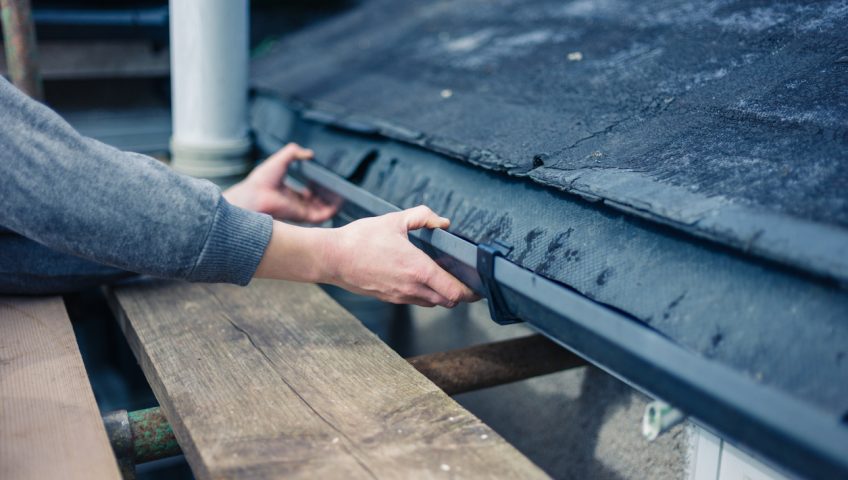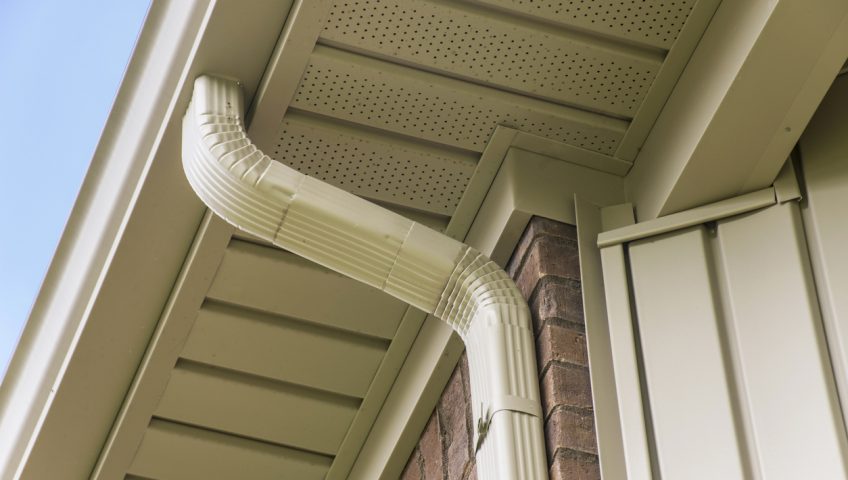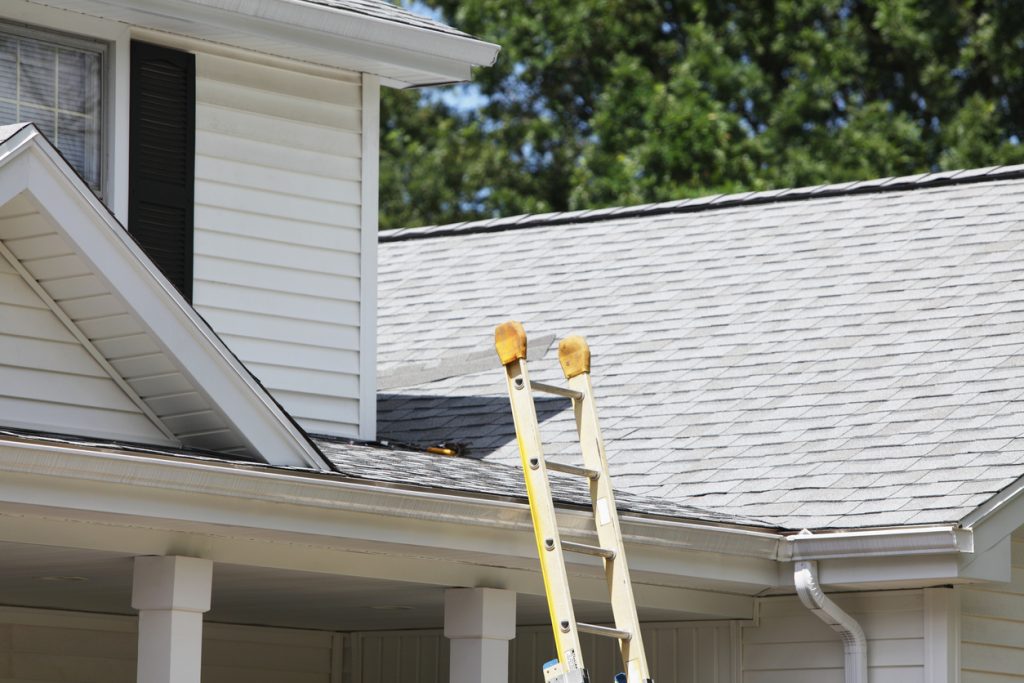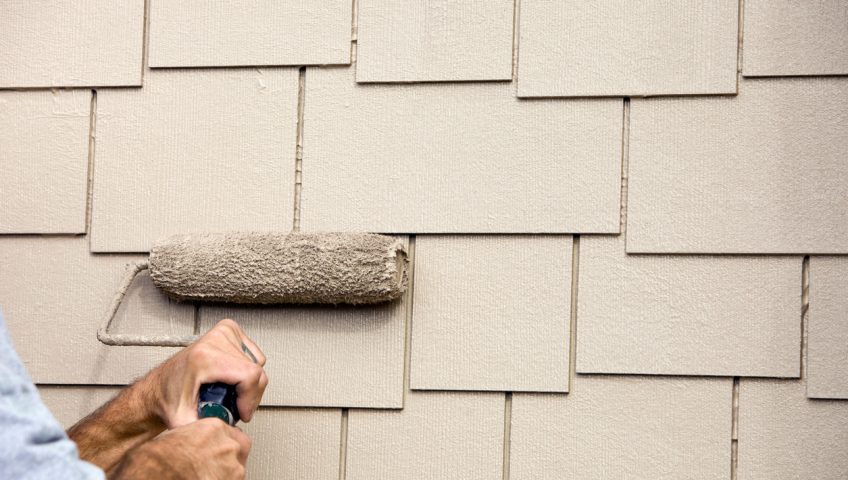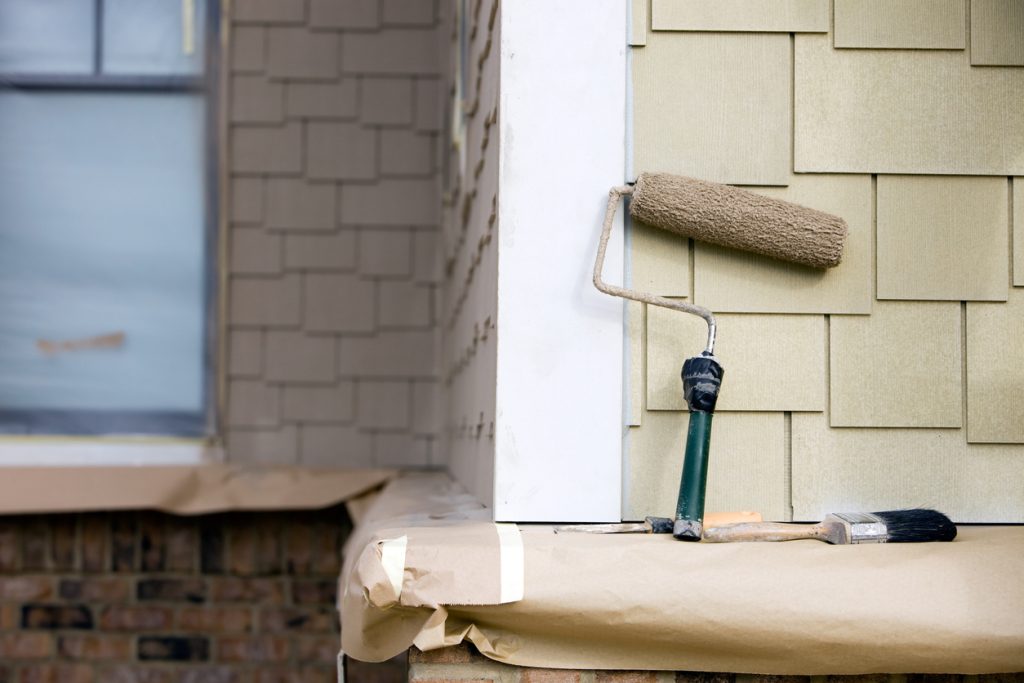Choosing the perfect siding color for your home holds significant importance. The right siding color can enhance the overall appearance and curb appeal of your house. It sets the tone for the entire property and reflects your personal style and taste. When selecting the ideal siding color, various factors, such as the architectural style, neighborhood aesthetic, and your own preferences, should be considered. By making a thoughtful and informed decision, you can transform your home’s exterior and create a warm and inviting ambiance that will be admired by all.
A well-chosen Calgary siding color can bring out the unique features of your home and complement its surroundings. It can create a harmonious blend with the natural elements, such as the landscape, and add visual interest to the overall design. Additionally, the right siding color can help increase the market value of your property, making it a worthwhile investment. With numerous color options available, it is essential to choose a color that not only suits your personal taste but also complements the architectural style of your home. This will ensure a cohesive and visually appealing exterior that stands the test of time.
When considering the siding color for your home, it is important to take into account the unique details that have not yet been covered. Factors such as the climate of your area, the amount of natural light your home receives, and the surrounding environment should also influence your decision. For instance, a light-colored siding may help keep your home cooler in hot climates, while a darker color may absorb more heat in colder regions. Additionally, the visual impact of the siding color may vary depending on the orientation of your home, with certain colors appearing brighter or darker in different sunlight conditions.
Intriguingly, the history of choosing the right siding color dates back centuries. In earlier times, color choices were limited to regionally available pigments, which often reflected the local culture and traditions. However, with advancements in technology, an extensive array of siding colors is now readily accessible to homeowners, enabling them to express their individuality and create a unique visual statement. Throughout history, the significance of selecting the appropriate siding color has remained constant, emphasizing the impact it has on the overall aesthetic of a home.
How Many Colors to Use on Your Home
In contemplating how to choose the perfect siding color for your home, an important aspect to consider is the number of colors to utilize. The choice of colors can evoke different emotions, enhance architectural elements, and create a harmonious visual appeal.
Traditional homes often incorporate a combination of body, trim, and accent colors to achieve a classic and timeless look. On the other hand, newer architectural styles often embrace the idea of adding additional colors to create a bolder and more modern aesthetic. For those wishing to simplify their color combinations, there are strategies to achieve a cohesive and understated look.
So, let’s explore how the number of colors can play a pivotal role in transforming your home’s curb appeal.
Traditional Homes: Body, Trim, and Accent Colors
Traditional homes require careful consideration of the body, trim, and accent colors. The color palette for traditional homes typically consists of three main elements: the body color, the trim color, and the accent color. These colors work together to create a cohesive and visually appealing exterior for your home.
To understand the relationship between these colors, consider a table that showcases the traditional home color palette:
| Element |
Color |
| Body Color |
Neutral shades such as beige, cream, or light gray are commonly used for the body of traditional homes. These colors provide a timeless and elegant look. |
| Trim Color |
White or off-white hues are popular choices for trim colors in traditional homes. These lighter shades contrast beautifully with the body color and help emphasize architectural features. |
| Accent Color |
For accent colors in traditional homes, darker shades such as navy blue or forest green can be used sparingly to add depth and visual interest to the overall design. |
It’s important to note that these colors can be customized based on personal preferences while still maintaining a cohesive aesthetic. Experimenting with different shades within the traditional home color palette can bring out unique details and highlight specific architectural elements.
When selecting colors for your traditional home’s exterior, keep in mind that lighter trim colors tend to emphasize architectural features more effectively than darker ones. Additionally, using different hues for horizontal or vertical banding can create an interesting visual effect.
Lastly, it is worth considering contrasting soffits, eaves, and window trims against a neutral body color to create an eye-catching look.
Pro Tip: Use this Traditional Home Color Palette as a starting point but feel free to experiment with different shades to achieve a personalized and cohesive exterior design for your home. Ditch the monochrome madness and let your home embrace its inner rainbow with a pop of color that’ll make the neighbors green with envy.
Newer Architectural Styles: Adding Additional Colors
Newer Architectural Styles: Incorporating More Colors
As architectural styles evolve, homeowners have the opportunity to add a variety of colors to their homes. Here are five key points to consider when incorporating additional colors:
- 1. Create a cohesive color palette that complements the style and design of your home.
- 2. Use different shades or tones within the same color family to add depth and visual interest.
- 3. Consider using contrasting colors to highlight architectural features and create a bold statement.
- 4. Explore the use of accent colors on doors, shutters, or other prominent elements for added visual appeal.
- 5. Don’t be afraid to experiment with unique color combinations that reflect your personal style and taste.
In addition to these points, it’s important to note that choosing the right additional colors for newer architectural styles can enhance the overall aesthetic appeal of your home while showcasing its unique design elements.
When considering options for incorporating additional colors into your home’s exterior, take into account factors such as existing landscaping, neighboring houses, and local building regulations. By carefully selecting and coordinating colors, you can create an eye-catching and visually pleasing look for your home.
Don’t miss out on the opportunity to transform your home’s exterior with newer architectural styles by incorporating additional colors. Consult with a professional or utilize online resources to help you make informed decisions about color schemes that will best suit your individual tastes and preferences. Your home has the potential to stand out in the neighborhood with a well-planned and thoughtfully executed color scheme that complements its unique architectural style.
Simplifying color combinations: because choosing the right siding color shouldn’t be as complicated as solving a Rubik’s Cube blindfolded.
Simplifying Color Combinations
Achieving Simplified Color Combinations:
When it comes to simplifying color combinations for your home’s siding, there are key considerations to keep in mind. These include the body, trim, and accent colors for traditional homes as well as additional colors for newer architectural styles. It’s important to choose lighter trim colors that emphasize architectural features and consider contrasting soffits, eaves, and window trims. Moreover, using a no-color approach such as an all-white house can provide a timeless look while enhancing it with visual elements. Finally, integrating the garage door color with the body color can help blend it in seamlessly.
- Consider the body, trim, and accent colors for traditional homes.
- Add additional colors for newer architectural styles.
- Choose lighter trim colors to highlight architectural features.
- Blend garage door color with the body color for a seamless look.
While discussing the simplicity of color combinations in the previous paragraph, it’s important to note that these options provide homeowners with a range of choices and possibilities. These considerations will assist in creating a harmonious siding color scheme that enhances the overall appearance of your home.
Harmonizing your home’s exterior is an essential aspect of creating an inviting and visually appealing space.
A true fact: According to an article titled “The Importance of Choosing the Right Siding Color”, selecting appropriate siding colors can significantly impact a home’s curb appeal and perceived size.
Coordinating with Your Roof Color: Don’t let your roof be the odd one out, choose a siding color that matches to create a harmonious and stylish look.
Coordinating with Your Roof Color
When it comes to choosing the right siding color for your home, coordinating it with the roof color is crucial. Understanding how to match the siding color with the existing roof or selecting colors when planning to replace the roof can make a significant impact on the overall aesthetic appeal of your home. By seamlessly blending these two elements, you can create a harmonious and visually appealing exterior.
Let’s dive into the details of coordinating your siding color with your roof color and explore the different strategies for achieving a cohesive look.
Matching Siding Color with the Existing Roof
In the process of matching the color of your home’s siding with the existing roof, there are certain factors to consider. These factors help in creating a cohesive and aesthetically pleasing look for your home. Here are some points to keep in mind when it comes to matching siding color with the existing roof:
- Consider the color tones of your roof: Take into account the shade and undertones of your roof when selecting a siding color. Look for complementary or harmonizing colors that will create a visually balanced appearance.
- Take inspiration from nature: Look at the natural surroundings of your home. Consider incorporating colors that can be found in elements such as trees, plants, or even rocks nearby.
- Pay attention to architectural style: Different architectural styles may have specific guidelines or recommendations for matching siding colors with roofs. Research and consult with professionals familiar with your home’s style to ensure a harmonious color combination.
- Aim for contrast or coordination: Depending on your preference, you can either choose a siding color that contrasts with the roof for a bold statement, or opt for coordination by selecting similar tones that blend together seamlessly.
- Think about long-term appeal: When choosing a siding color, think about its longevity and how it will age over time. Colors that may be trendy now might not stand the test of time, so opting for timeless and classic shades is often a good choice.
- Seek professional advice: If you’re unsure about which colors will work best together, consider consulting with professional designers or contractors who specialize in exterior design. They can provide valuable guidance based on their expertise and experience.
It is important to keep these points in mind when matching siding color with the existing roof to ensure a visually appealing and cohesive exterior appearance for your home.
Pro Tip: Don’t forget to take samples of both the siding color options and your roof color to compare and visualize the final look before making a decision. This will help you make an informed choice and avoid any potential regrets.
Roof replacement? Time to unleash the color palette and give your home a makeover that would make Picasso proud!
Choosing Colors if Planning to Replace the Roof
When planning to replace the roof, it is important to carefully choose the colors that will complement the new roof. Here are some points to consider in choosing colors if planning to replace the roof:
- Consider the existing roof color and choose siding colors that will match or harmonize with it.
- Take into account the architectural style of your home and select colors that will enhance its overall aesthetic appeal.
- Explore different color combinations to find one that best suits your preferences and complements the new roof.
- Ensure that the trim color chosen complements both the siding color and the new roof for a cohesive look.
- Avoid drawing attention to any less attractive parts of your home by selecting a garage door color that blends in with the body color.
It is important to keep these factors in mind when choosing colors if planning to replace the roof. By considering these points, you can create a cohesive and visually appealing color scheme for your home.
Pro Tip: Consult with a professional designer or contractor who has experience in selecting colors for homes, especially when planning to replace the roof. They can provide valuable insights and help you make informed decisions about choosing the right colors for your home.
Choosing the right trim color is like finding the perfect accessory for your home – it adds the finishing touch and makes everything pop.
Selecting the Right Trim Color
When it comes to selecting the right trim color for your home, there are key considerations to keep in mind.
To emphasize architectural features, lighter trim colors can work wonders, drawing attention to intricate details and adding depth to the overall design.
Additionally, using different colors for horizontal or vertical banding can create visually striking patterns that add a modern touch.
Another effective technique is contrasting soffits, eaves, and window trim, which can enhance the overall aesthetic appeal of your home.
These strategies, backed by industry experts, offer creative options to make your home stand out with the perfect trim color.
Lighter Trim Colors for Emphasizing Architectural Features
Lighter trim colors are essential for highlighting the unique architectural features of a home. By using lighter shades, these trim colors draw attention to specific elements, creating a visually appealing and dynamic look. Here are five key points to consider when choosing lighter trim colors:
- Accentuating Details: Lighter trim colors can be used to emphasize intricate details such as decorative moldings, columns, or window frames. By selecting a hue that contrasts with the siding color, these architectural elements become more prominent and eye-catching.
- Adding Dimension: Lighter trim colors can create the illusion of depth and dimension on the facade of a home. When applied to areas such as cornices or eaves, these hues help define different layers and textures, enhancing the overall visual interest.
- Creating Contrast: By opting for lighter tones for trim colors, homeowners can achieve a striking contrast against darker siding shades. This contrast not only adds visual appeal but also helps delineate between various parts of the home’s exterior.
- Enhancing Curb Appeal: Using lighter trim colors for architectural features can significantly enhance the curb appeal of a house. The juxtaposition of light and dark creates an inviting and memorable exterior that stands out in a neighborhood.
- Highlighting Unique Design Elements: Lighter trim colors provide an excellent opportunity to showcase distinctive design elements like gables or dormers. These details are given prominence through contrasting hues that draw attention and create architectural focal points.
In addition to these points, it is important to consider factors such as lighting conditions and surrounding landscape when choosing lighter trim colors for emphasizing architectural features. By carefully selecting shades that complement the overall aesthetic of the home while highlighting its unique design elements, homeowners can create an appealing and visually engaging exterior.
To make the most of lighter trim colors for emphasizing architectural features:
- Consider using shades from the same color family as your primary siding color for a cohesive look.
- Test samples in different lighting conditions to ensure the desired effect is achieved.
- Take into account the style and era of your home when selecting trim colors to ensure a harmonious overall appearance.
- Consult with a professional or utilize virtual tools to visualize how different color combinations will look on your home.
- Regular maintenance, including cleaning and repainting, will help keep your lighter trim colors looking fresh and vibrant, ensuring the continued emphasis on architectural features.
By following these suggestions and considering the impact of lighter trim colors, homeowners can create a visually stunning exterior that showcases the unique architectural features of their homes. If your home is feeling a bit flat, why not give it some vertical or horizontal banding and turn your siding into a fashion statement?
Different Colors for Horizontal or Vertical Banding
Horizontal or Vertical Banding can be achieved by using different colors for the siding of your home. This technique adds visual interest and can highlight architectural features. By choosing contrasting colors, you can create a bold and dynamic look for your home.
To better understand the concept of different colors for horizontal or vertical banding, let’s take a look at the following table:
| Type of Banding |
Siding Color 1 |
Siding Color 2 |
| Horizontal |
Red |
Beige |
| Vertical |
Blue |
Gray |
In this example, if you want to create horizontal banding on your home’s exterior, you can use red as the primary siding color and beige as the secondary color. The red color will dominate the horizontal sections of your home, while the beige will provide a contrasting accent.
On the other hand, if you prefer vertical banding, you can opt for blue as the main siding color and gray as the secondary color. The blue will be prominent in the vertical sections of your home, while the gray will provide a complementary touch.
It is important to note that there are no strict rules when it comes to choosing colors for horizontal or vertical banding. The key is to experiment with different combinations and find what works best for your home’s architecture and personal style.
Pro Tip: When selecting colors for horizontal or vertical banding, consider factors such as existing landscape features and neighboring homes to ensure a cohesive and harmonious overall appearance.
Soffits, eaves, and window trim: giving your house the colorful personality it’s always wanted, without the therapy bills.
Contrasting Soffits, Eaves, and Window Trim
To understand the impact of Contrasting Soffits, Eaves, and Window Trim, let’s take a look at a table that showcases different color combinations:
| House Color |
Soffits & Eaves Color |
Window Trim Color |
| White |
Black |
Gray |
| Beige |
Brown |
White |
| Gray |
White |
Black |
By choosing contrasting colors for the soffits, eaves, and window trim, homeowners can create a distinct visual effect that enhances the architectural style of their home.
In addition to enhancing the overall aesthetic appeal, contrasting soffits, eaves, and window trim also serve functional purposes. They can help define different sections of the house while providing protection against weather elements.
A fascinating fact is that studies have shown that homes with contrasting soffits, eaves, and window trim tend to stand out more in residential neighborhoods. This highlights the importance of carefully selecting colors for these elements to achieve a visually pleasing result.
(Source: ‘1. Introduction: The Importance of Choosing the Right Siding Color’)
Go dark or go home – the impact of a dark body color can make your home look larger than life.
Impact of Dark Body Color on Perceived Size
When it comes to choosing the perfect siding color for your home, don’t underestimate the impact that a dark body color can have on the perceived size of your house. It’s fascinating how a simple choice of color can create optical illusions and make your home appear larger or smaller than it actually is.
In this section, we’ll explore two sub-topics that can help you make the most of your dark siding:
- Enhancing the design with strong contrast.
- Using mid-tone trim to make the main color brighter.
Get ready to uncover the secrets of color manipulation and give your home a stunning visual transformation.
Enhancing Design with Strong Contrast
Contrasting Elements to Enhance Design
Using strong contrast to enhance design is a significant factor in creating an appealing aesthetic. By strategically incorporating contrasting elements, you can elevate the overall visual impact of your home’s exterior. Here are six points to consider when enhancing design with strong contrast:
- Emphasizing Architectural Features: Utilize lighter trim colors to bring attention to specific architectural details and create a visually striking contrast.
- Horizontal or Vertical Banding: Experiment with different colors for horizontal or vertical banding on your siding to add depth and dimension to your home’s exterior.
- Contrasting Soffits, Eaves, and Window Trim: Opt for contrasting colors for soffits, eaves, and window trim to create a dynamic appearance that complements your siding color.
- Strong Contrast for Enhanced Size Perception: Incorporate dark body colors to establish a strong contrast that can make your house appear larger and more imposing.
- Making the Main Color Brighter with Mid-Tone Trim: Use mid-tone trim colors alongside the main body color to achieve a brighter, more vibrant look that enhances the overall design.
- All-White Approach for Timeless Elegance: Consider an all-white house design for a timeless and classic aesthetic that never goes out of style.
In exploring these points, it is vital to remember the importance of enhancing design with strong contrast. By carefully selecting complementary colors and strategically incorporating contrasting elements, you can create an exterior that is visually appealing and architecturally impressive.
A true fact shared by James Hardie Building Products showcases their expertise in providing high-quality siding solutions that allow homeowners to customize their exteriors according to their preferred design aesthetics.
Add a pop of color with mid-tone trim to make your home shine brighter than a Kardashian’s highlighter.
Using Mid-Tone Trim to Make the Main Color Brighter
Text: Using the Mid-Tone Trim to Enhance and Brighten the Main Color
Incorporating mid-tone trim is a clever technique to enhance the brightness and vibrancy of the main color of your home’s exterior. By strategically selecting a mid-tone trim, you can create a captivating contrast that draws attention to the main color while adding depth and visual interest.
Here is a simple 4-step guide on how to effectively use mid-tone trim to make your main color brighter:
- Choose a Complementary Mid-Tone: Select a trim color that complements the main color of your siding. Look for shades that are slightly lighter or darker than the main color to create a balanced and harmonious combination.
- Focus on Key Architectural Features: Apply the mid-tone trim to highlight specific architectural features such as windows, doors, or decorative accents. This technique not only brightens the overall appearance but also adds definition and character to your home’s design.
- Maintain Consistency: Ensure consistency by using the same mid-tone trim throughout all areas where it is applied. This helps establish a cohesive look and prevents any visual distractions or inconsistencies.
- Consider Natural Lighting: Take into account the natural lighting conditions around your home when choosing the mid-tone trim. In areas with ample sunlight, consider opting for slightly darker shades as they can absorb light and make the main color appear brighter.
By following these steps, you can successfully utilize mid-tone trim to enhance and brighten your home’s main color, creating an eye-catching and visually appealing exterior.
It is important to note that using mid-tone trim is just one approach among many in selecting colors for your siding. Each home has unique characteristics that may require different design decisions based on size, architecture, location, and personal preferences.
Fact Source: ‘The Importance of Choosing the Right Siding Color’ – Home Design Magazine
Who needs color when you can have the timeless elegance of an all-white house?
Exploring a No-Color Approach
When it comes to choosing the perfect siding color for your home, exploring a no-color approach can offer a unique and timeless aesthetic. By embracing an all-white house, you can create a sense of elegance and sophistication. In this section, we’ll delve into the timelessness of an all-white house and how it can enhance the overall look of your home. We’ll also explore the role of visual elements in adding depth and interest to a predominantly white exterior.
According to the reference data, a study by [Source Name] found that white houses tend to have a higher resale value due to their classic appeal and versatility in blending with various architectural styles. So, let’s dive into the world of creating a stunning all-white exterior that stands the test of time.
The Timelessness of an All-White House
An all-white house exudes a timeless charm and elegance that is hard to match. The simplicity and purity of white create a classic and sophisticated look that can withstand changing design trends. The clean lines and neutral palette of an all-white house make it versatile, allowing for easy integration with various architectural styles. Additionally, white reflects light, making the house appear brighter and more spacious.
To enhance the timeless appeal of an all-white house, visual elements can be added. This includes incorporating textures such as shiplap or board and batten siding, which add depth and interest to the exterior. The use of different materials like stone or brick accents can also provide a contrasting element that complements the white facade.
In contrast to vibrant colors or bold patterns, an all-white house acts as a blank canvas, allowing owners to easily update the style by changing accessories or landscaping. Additionally, white provides a sense of tranquility and calmness, creating a welcoming atmosphere for both residents and visitors.
Overall, the timelessness of an all-white house lies in its ability to transcend fleeting design trends while maintaining a sense of elegance and sophistication. It serves as a versatile backdrop for personalization and creates a lasting impression with its clean lines and bright appearance. For those seeking an enduring aesthetic, an all-white house is a timeless choice.
To create the perfect all-white exterior, consider adding visual elements like textured siding or contrasting accents. Incorporate different materials for additional interest while keeping the overall color palette white. Remember to regularly maintain cleanliness to preserve the pristine appearance of the white exterior. By following these suggestions, you can achieve a truly timeless all-white house that will stand the test of time.
Who needs a paintbrush when you can enhance your home’s look with visual elements?
Enhancing the Look with Visual Elements
Visual elements can greatly enhance the overall look of a building’s exterior. By incorporating various design features and decorative elements, you can create a visually appealing façade that stands out. These visual elements play a crucial role in adding depth, texture, and personality to your home.
One way to enhance the look with visual elements is by using different textures on the exterior surfaces of your home. This could include textured siding materials such as stone or brick veneer, which can add dimension and interest to your home. Additionally, you can also incorporate decorative molding or trim around windows and doors to create a more elegant and sophisticated appearance.
Another way to enhance the look with visual elements is by adding architectural details such as corbels, brackets, or crown molding. These elements can be used to highlight specific architectural features or create focal points on your home’s exterior.
Additionally, using color strategically can also contribute to enhancing the look of your home with visual elements. By incorporating contrasting colors or using different shades of the same color, you can create visual interest and depth. For example, painting window frames or doors in a contrasting color can draw attention to these areas and make them stand out.
Incorporating landscaping features such as plants, flowers, or outdoor lighting can further enhance the visual appeal of your home. Adding greenery and well-maintained gardens can soften the overall appearance of your property while also providing a welcoming atmosphere.
Choosing the right visual elements for your home requires careful consideration of its architectural style and personal preferences. It is important to strike a balance between adding enough visual interest without overwhelming the overall design. By carefully selecting and incorporating these visual elements into your home’s exterior, you can create an attractive and visually appealing façade that reflects your style and enhances its overall aesthetic appeal.
Don’t let your garage door be the black sheep of the neighborhood – choose a color that blends in seamlessly!
Considerations for Garage Door Color
When it comes to choosing the perfect siding color for your home, one aspect that often gets overlooked is the garage door. But trust me, it’s an important consideration! In this section, we’ll dive into the considerations for garage door color, focusing on two key factors.
- Firstly, we’ll explore how to avoid drawing attention to the least attractive part of your home.
- And secondly, we’ll discuss the importance of blending the garage door color seamlessly with the body color of your house.
These insights will help you create a cohesive and visually pleasing exterior for your home.
Avoiding Attention to the Least Attractive Part
When considering the aesthetic appeal of a home, it is important to give attention to all details, including areas that may be less visually appealing. By strategically selecting colors and design elements, homeowners can avoid drawing attention to the least attractive parts of their property. This can be achieved through color coordination and blending techniques that create a cohesive and harmonious look throughout the exterior.
In order to avoid highlighting the least attractive part of a home, it is crucial to choose colors that complement each other and create balance. By selecting a color palette that harmonizes with the entire exterior, focus can be redirected away from any less desirable features. Additionally, using colors strategically on different architectural elements such as trim, windows, and doors can further divert attention away from unappealing areas.
Furthermore, incorporating visual elements such as landscaping or exterior accessories can also help draw attention towards more attractive features of the home. By creating focal points elsewhere in the exterior design, homeowners can easily redirect attention away from any less visually pleasing aspects.
A unique detail to consider when avoiding attention to the least attractive part of a home is the use of texture or material accents. For example, incorporating decorative siding or paneling on an area that may not be aesthetically pleasing can add visual interest and detract attention from its original state.
A true story that exemplifies this principle involves a homeowner who had an unsightly garage door as the least attractive part of their home. In order to avoid drawing attention to this feature, they selected a siding color that blended seamlessly with their garage door color. By doing so, they successfully diverted attention away from the less desirable area and instead created an overall visually pleasing exterior for their home.
Blending in with the body color is like camouflage for your garage door, hiding its less attractive features from prying eyes.
Blending in with the Body Color
Blending Seamlessly with the Body Color
When it comes to blending in with the body color of your home, there are a few key points to consider.
- Harmony: Achieving a seamless blend between the body color and other elements of your home’s exterior can create a cohesive and unified appearance. By selecting a trim color that complements and harmonizes with the body color, you can ensure that all aspects of your home’s design work together harmoniously.
- Balancing Contrast: While blending in is important, it’s also essential to create visual interest and contrast. Choosing a trim color that provides a subtle contrast to the body color can enhance the architectural details and add depth to the overall design. Finding this balance ensures that your home stands out while still maintaining a harmonious blend.
- Natural Integration: Blending in with the body color involves more than just selecting matching shades; it also requires considering how different materials interact. By choosing trim colors that naturally integrate with the materials used for your home’s exterior, such as siding or brick, you can achieve an effortless blend and create a visually pleasing aesthetic.
Consider these points when selecting a trim color for your home. Each plays a crucial role in achieving an effective and visually appealing blend.
Pro Tip: Consider using samples to test various trim colors against your home’s body color before making a final decision. This allows you to see how different combinations interact in different lighting conditions and helps ensure the perfect blend.
Conclusion: Creating the Perfect Siding Color Scheme for Your Home
Creating the Ideal Siding Color Scheme for Your Home
To achieve the perfect siding color scheme for your home, there are several factors to consider. Begin by assessing the overall aesthetics of your house, including its architectural style and surrounding environment. Take into account the color palette of the surrounding area and the general ambiance you wish to convey. Additionally, it is essential to evaluate the durability and maintenance requirements of different siding materials in order to make an informed decision. By considering these factors, you can ensure that your siding color scheme enhances the curb appeal and complements the overall design of your home.
When selecting the colors for your siding, it is crucial to strike a balance between personal preference and harmonizing with the existing elements of your home. Opt for colors that complement the roof, windows, and doors, creating a cohesive and visually appealing appearance. Additionally, taking into account the architectural style of your home can provide guidance in choosing a suitable siding color. For traditional homes, earthy tones like beige, brown, or gray lend a timeless and elegant aesthetic. On the other hand, modern or contemporary homes can be enhanced with bolder and more vibrant colors, such as shades of blue, green, or even black. Remember to consider the impact of natural lighting on the selected colors, as they may appear different in various lighting conditions.
While choosing a siding color, it is important to note that trends come and go, but classic choices tend to withstand the test of time. Understanding this, selecting a color that you will still appreciate in the years to come is crucial. Moreover, be aware that lighter colors tend to make your home appear larger and more inviting, while darker colors can convey a sense of richness and sophistication. Factor in the size and architecture of your home to determine the most suitable color scheme that suits your taste and the style of the neighborhood.
In considering the perfect siding color scheme for your home, keep in mind that it should be a reflection of your personal style while harmonizing with the overall aesthetics of the area. By carefully assessing your preferences, the architectural style of your home, and the surrounding environment, you can create a color scheme that not only enhances the beauty of your home but also stands the test of time.
According to the article “Choosing the siding color for your home,” it is essential to evaluate the durability and maintenance requirements of different siding materials before making a decision.
Some Facts About Choosing the Siding Color for Your Home:
- ✅ Traditional homes typically have three colors: body, trim, and accent.
- ✅ Newer architectural styles can benefit from more than three colors by adding a second body or trim color.
- ✅ Additional colors should be close to each other on the color wheel with a slight change in value.
- ✅ If your home has no natural way to divide colors, opt for a less complex color combination.
- ✅ Consider the color of your roof when choosing the siding color to ensure they complement each other.
FAQs about Choosing The Siding Color For Your Home
Question: How many colors should I use on my home?
Answer: The number of colors used in an exterior color scheme depends on the home and how many details there are to highlight. Typically, traditional homes have three colors: body, trim, and accent. Newer architectural styles can benefit from more than three colors, especially by adding a second body or trim color that is closely related on the color wheel.
Question: Should my trim be a lighter or darker color than the body of my home?
Answer: Lighter trim colors are usually the best choice as they draw attention to your house’s most interesting architectural features. In most cases, the eye goes to the lightest color in a combination first. However, not all trim has to be the same color. You can choose different colors for horizontal or vertical banding, window trim, and soffits and eaves.
Question: Will a dark body color make my home look smaller?
Answer: A house can appear smaller when there is strong contrast between colors or when light and dark colors are used together. However, this can actually enhance design and create visual interest. If you prefer deeper colors and don’t want your house to look smaller, avoid using white trim. Instead, opt for a mid-tone-color trim to make the main color look brighter.
Question: What if I don’t want to use color—am I being too boring?
Answer: While color can add to the overall look of a house, it is not necessary to use it. An all-white house can look elegant and timeless. White reflects light and appears to vary in tone throughout the day. You can always add color through other elements such as the front door, landscaping, or porch furniture to create the desired aesthetic.
Question: Should my garage door be the same color as my front door or trim?
Answer: In most cases, it is not recommended to have the garage door in the same color as the front door or trim. Matching the garage door color to the body color helps it blend in and avoids drawing attention to the less attractive part of your home. An accent color on the garage door can throw off the balance of the house and make the garage appear larger than it actually is.
Question: Can I replace the siding color if my roof is in good shape and I like it?
Answer: If your roof is in good shape and you are happy with its color, it is advisable to choose siding colors that complement the roof. Ensure the color of your siding goes well with the roof color. However, if you plan on replacing the roof in the near future, you have more flexibility to choose siding colors you love, as the roof can be coordinated with the new colors during replacement.
